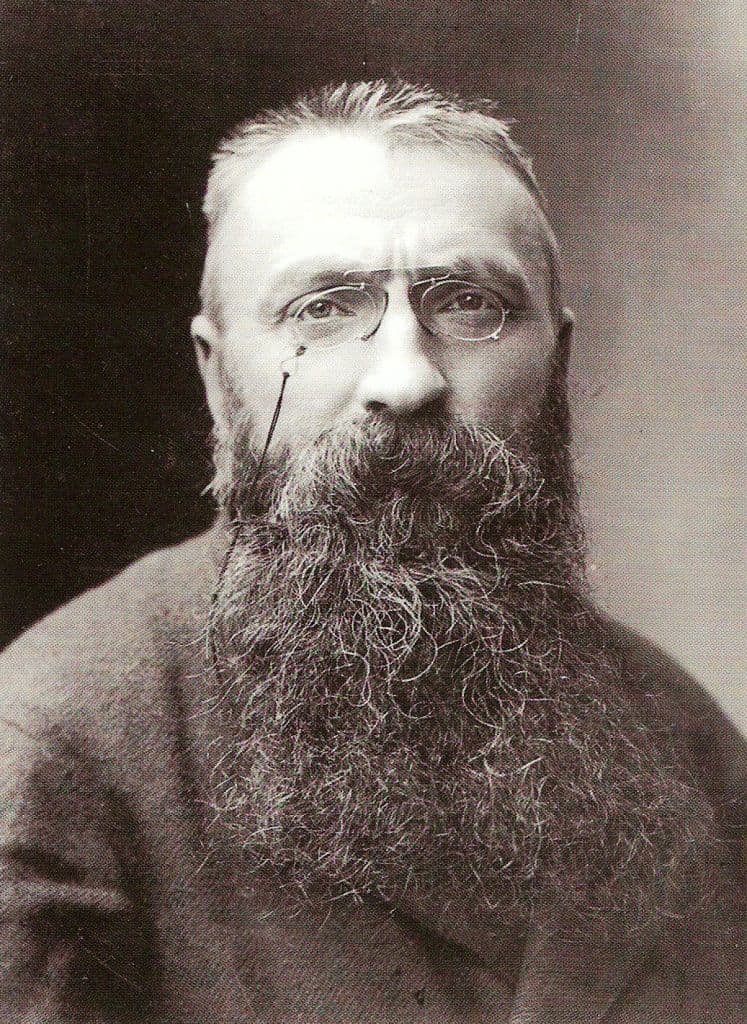Loading...

1840–1917
Movements
Occupations
François Auguste René Rodin (1840-1917) stands as the founder of modern sculpture, transforming the art form from academic tradition into expressive modernism. Born into a working-class Parisian family, Rodin faced early rejection, failing three times to gain admission to the prestigious École des Beaux-Arts. This setback forced him to work as a craftsman for nearly two decades, though his 1875 trip to Italy proved transformative when encountering Michelangelo's work liberated him from academic constraints. Rodin's breakthrough arrived with The Age of Bronze (1877), a life-size male nude so naturalistic that critics accused him of casting from a living model. This controversy established his reputation for innovation. In 1880, he received the commission that would consume much of his career: The Gates of Hell, a monumental museum portal comprising 186 figures that remained unfinished at his death. This sprawling project generated many of his most celebrated independent works, including The Thinker, The Kiss, and The Three Shades. His public commissions challenged conventional expectations. The Burghers of Calais (1889) depicted heroism through vulnerability rather than triumphalism, while his Monument to Balzac (1898) was rejected as too radical, prompting supporters including Monet, Debussy, and Clemenceau to defend his artistic integrity through a public manifesto. Rodin revolutionized sculpture through several innovations. He emphasized naturalism and emotional intensity over idealized classical forms, modeling complex, turbulent surfaces in clay that celebrated individual character and physicality. He pioneered the concept that sculptural fragments—torsos, hands, figures without heads or limbs—could stand as complete, autonomous artworks. The Walking Man exemplifies this radical approach. His technical method involved models moving naturally around his studio rather than holding academic poses, working quickly in clay which assistants enlarged and cast in bronze or marble, allowing multiple reproductions and reconfigurations. By 1900, Rodin achieved international recognition. His World's Fair exhibition brought commissions from wealthy patrons worldwide and attracted followers including poet Rainer Maria Rilke, who served as his secretary. His personal life proved complex: he lived with Rose Beuret from 1864, had a passionate relationship with sculptor Camille Claudel (1883-1898), and became involved with artist Gwen John, marrying Beuret only weeks before her death in January 1917. Rodin died that November at age 77. Rodin's influence proved transformative, inspiring Constantin Brâncuși, Antoine Bourdelle, Aristide Maillol, and subsequent generations. His emphasis on emotional truth and fragmentation laid groundwork for twentieth-century abstract sculpture. The Musée Rodin, established in 1919 at his former residence, houses over 6,000 sculptures. Today, his works—particularly The Thinker and The Kiss—function as universal symbols recognized beyond art circles, cementing his position among history's most influential sculptors.
Artist Overview Writer Agent
Last updated: January 2025
Biography length: ~447 words
Wikidata/Wikimedia Commons